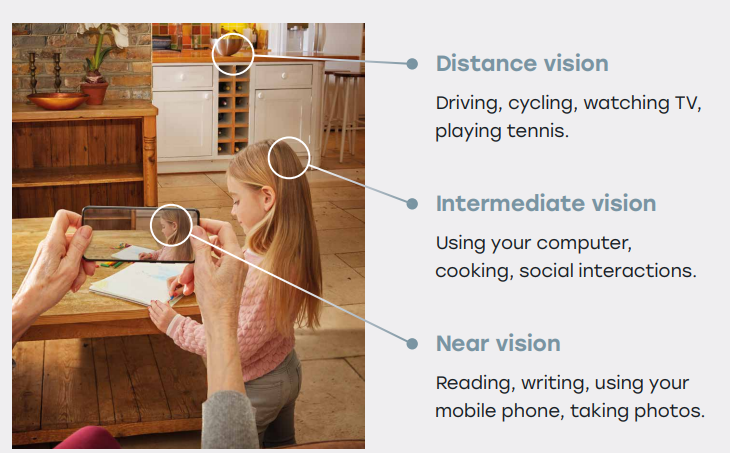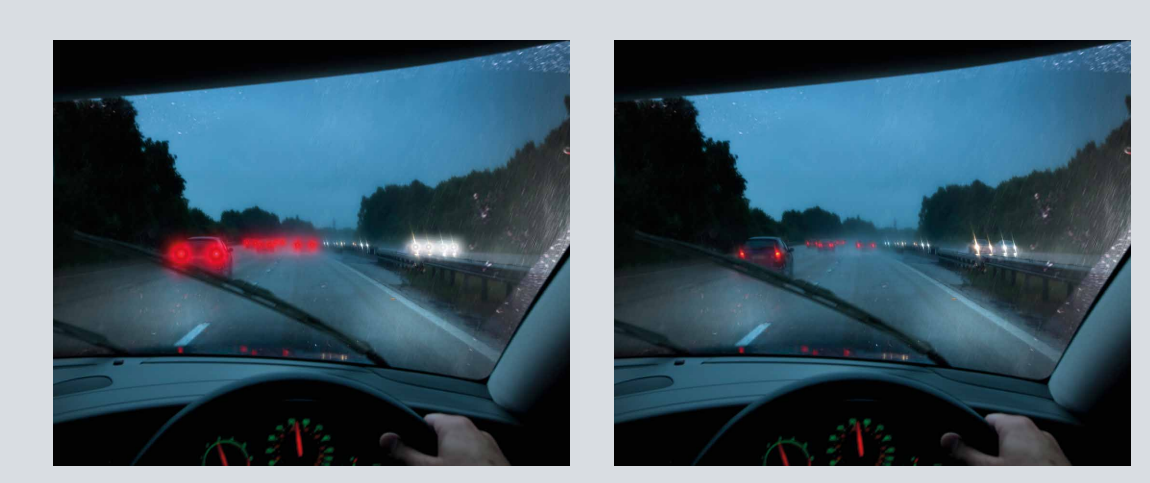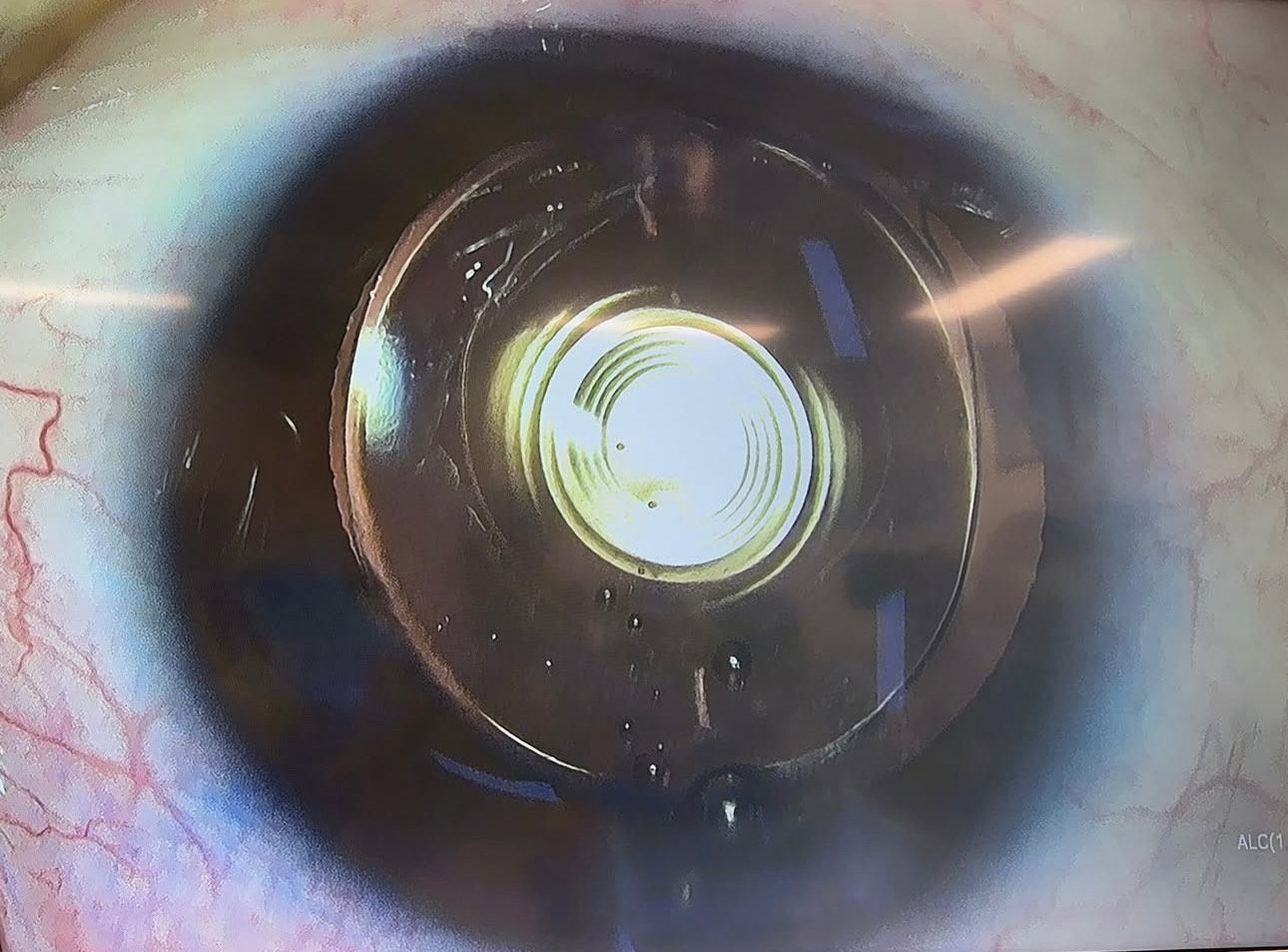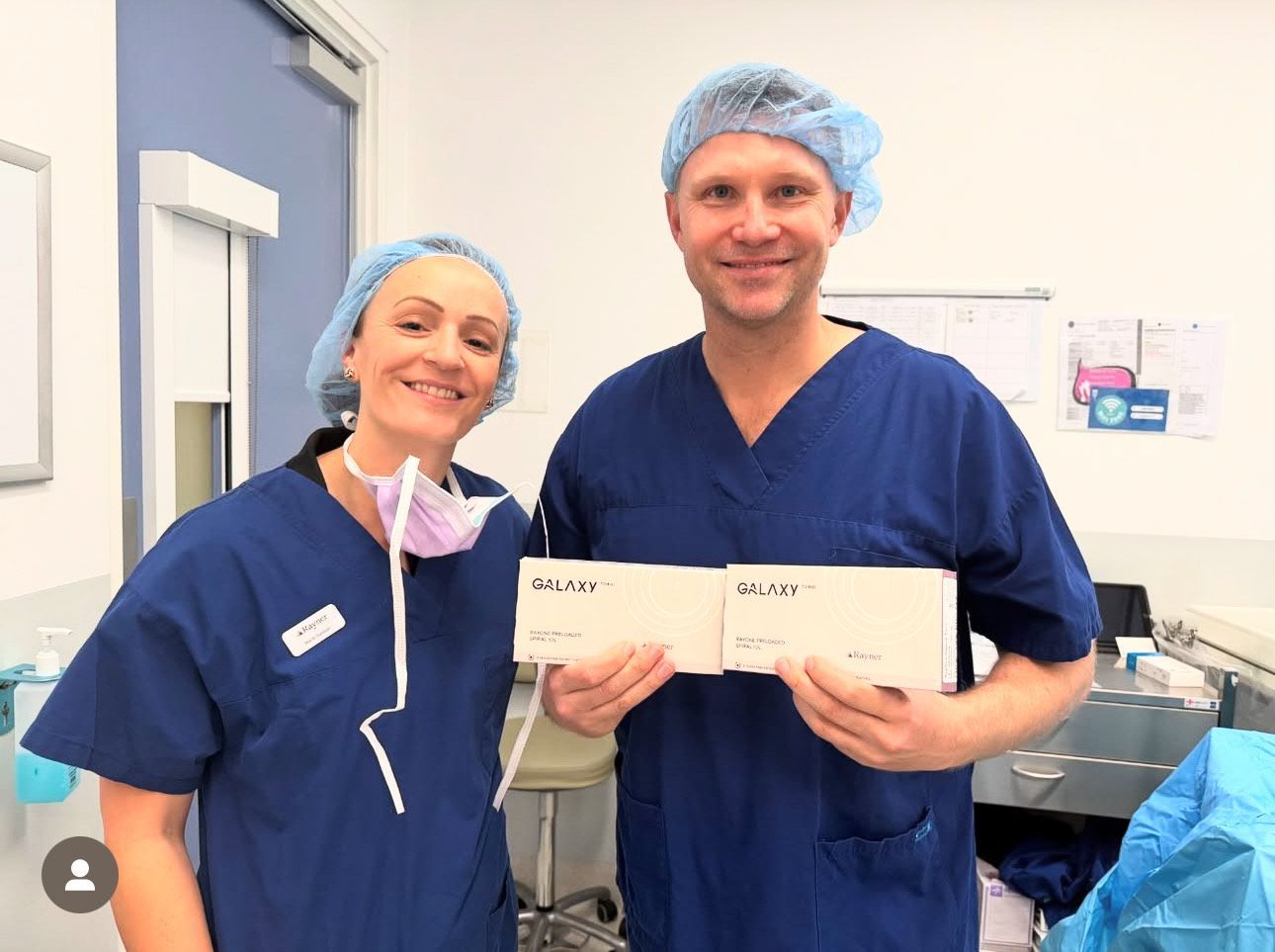Refractive Lens Replacement Surgery
Stop hiding behind your glasses and contact lenses.
What is a Refractive Lens Replacement?
A Refractive Lens Replacement or RLE is an operation that helps you see again without glasses when you’re older than 50 years of age. During the procedure your surgeon removes your natural and replaces it with a premium artificial lens that will give spectacle independence or significantly reduce dependence on glasses or contact lenses.
The surgery is exactly the same operation that is performed to remove a cataract but is performed before a cataract develops.
The artificial lens implant that the surgeon inserts in the eye can be chosen from several types of intraocular lenses and will be chosen during your consultation. The intraocular lens that is chosen is based on each individual patient’s visual needs.
Suitability Criteria for a Refractive Lens Replacement
- Any patient who is NOT suitable for Presbyond or LASIK
- 50 years or older
- Patients who have a desire to be spectacle or contact lens independent
- No history of cataracts
- Excellent corrected vision with glasses
- Patients completely dependent on reading glasses or multifocal glasses
- No other pathological diseases of the eye
Refractive Lense Replacement Steps
At Crystal Eye and Laser Centre, your surgeon performs the operation 100% with drop local anaesthetic applied to the eye. Unlike other centres in Western Australia, we do not use any needles to inject in the patient. We can also perform the surgery under general anaesthesia in certain circumstances. Our aim is to keep the patient as calm and comfortable as possible for this life changing operation. The procedure takes around 10 to 15 minutes per eye to complete.
Both eyes are operated on the same day but we can always accommodate our patients who only wants one eye to be operated at a time.
Lens Replacement is done at a day surgery as an outpatient procedure, meaning you will have surgery and return home the same day to recover.
Step 1:
Your surgeon will create a small 2mm self-sealing entry point in the front of the eye.
Step 2:
Your surgeon expertly creates a circular opening in the front part of your natural lens.
Step 3:
The natural lens is painlessly removed.
Step 4:
a new premium artificial lens is placed in the eye.
Visual recovery usually takes 2-3 days where patients can drive or fly again
Refractive Lens Replacement steps
Advantages of a Refractive Lens Replacement
- Eliminates the need for glasses and contact lenses
- Prevents cataract formation
- Removes all risks associated with contact lens wear
- The operation is done in a day surgery and recovery is within 3 days
- No risk of worsening dry eyes
- Can be performed on patients with high spectacle prescriptions who would otherwise be unsuitable for LASIK
- Long term financial savings eliminating the need for constant optometric assessments, new glasses or contact lenses, contact lens solutions etc
Spiral Optics Lenses
Spiral optics intraocular lenses are the latest technology intraocular lenses (IOL’s) available to patients, using revolutionary spiral optic technology to precisely manage the light entering your eye.
I was the first surgeon in Western Australia to implant this specific technology lens and was one of 10 surgeons worldwide to be requested by the company producing these lenses to conduct outcome research. I am also the surgeon in Australia who have implanted the most spiral optics lenses to date as I regard these lenses as the closest we have available to the “perfect” lens
These IOL’s are designed to provide you with high quality distance, intermediate and near vision without glasses.
What makes Spiral Optics lenses different to Multifocal lenses?
• With advanced IOLs, it can be normal to experience visual disturbances such as halos and glare around car lights and streetlamps at nighttime. These visual disturbances typically reduce over time thanks to brain adaptation, however, the RayOne Galaxy’s patented optic is specifically designed to significantly reduce those visual disturbances from the outset.
• Multifocal lenses lose some of the available light when it enters your eye, causing a small change in your vision when in dimmer light levels. Spiral optics lenses however sends 100% of the available light to the back of your eye (the retina) so that you do not lose any brightness in your day-to-day vision.
Monofocal Lenses
As the word “mono” (one) implies, monofocal lenses has only one focal point. These lenses can either be focussed for distance vision or near vision in both eyes.
If monofocal lenses are focussed for distance, glasses will be needed for near tasks like reading and computer work.
If monofocal lenses are focussed for near, glasses for distance will be needed like driving or watching tv.
Monofocal lenses do not cause nighttime glare and halo complications and the contrast sensitivity or quality of vision is not compromised.
Monofocal PLUS Lenses
Monofocal PLUS lenses are highly versatile intraocular lenses that induce natural optical properties known as l spherical aberrations to enhance the depth of focus. In other words a single focal point with a little bit of extra range of vision around it.
As these lenses has a range of vision they can be implanted with different focal points in each eye giving patients “Pseudophakic Blended Vision”- very similar to
Presbyond.
If monofocal PLUS lenses are focussed for distance, glasses will be needed for near tasks like reading. Most patients will see their computer or dashboard without glasses.
If monofocal PLUS lenses are focussed for one eye for near and the other for distance (Pseudophakic Blended Vision), patients will be spectacle independent and will only need glasses for certain tasks like reading fine print or driving at night.
Monofocal PLUS lenses do not cause nighttime glare and halo complications and the contrast sensitivity or quality of vision is not compromised
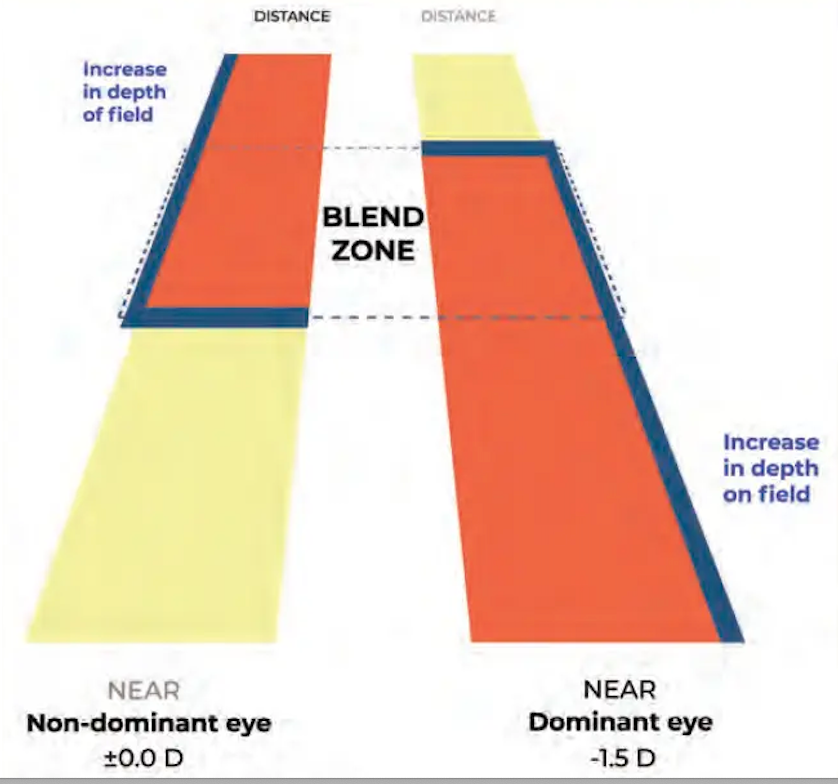
Pseudophakic Blended Vision in Monofocal PLUS lenses
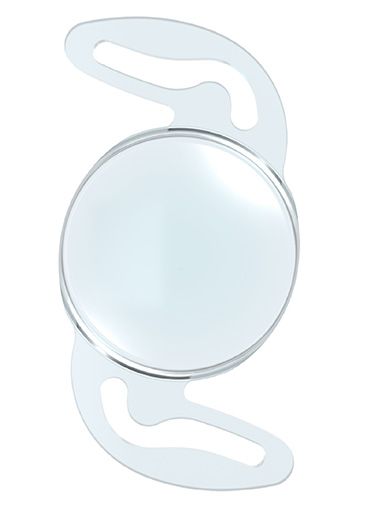
Example of a monofocal PLUS lens. These lenses have internal properties which induced natural optical phenomena known as spherical aberrations which enhances the patient’s depth of field
Extended Depth of Focus Lenses
Extended Depth of Focus or EDOF lenses are the most modern type of lenses that can achieve spectacle independence.
EDOF lenses elongates a single focal point and gives an extra range of vision of 1.5 optical units or more.
These are extremely versatile lenses that can be implanted at various focal points to achieve spectacle independence.
If EDOF lenses are focused for distance in both eyes, patients will have excellent distance, intermediate and functional near vision which means you will see your mobile phone and will be able to read newspaper font in good light. For small print readers will be needed.
EDOF lenses can also be used for Pseudophakic Blended Vision with an enhanced range with what is possible with Monofocal PLUS lenses.
EDOF lenses do cause night time glare though it is minimal and studies shows that most patients become accustomed to it over time.
Contrast sensitivity or quality of vision is minimally affected by EDOF lenses.

Simulated vision with EDOF lenses. Excellent distance and intermediate vison with functional near vision.

An example of an EDOF lens with extra properties in the lens to elongate the focal point
Multifocal Lenses
Multifocal lenses are intraocular lenses that give patient’s distance, intermediate and excellent reading vision without the need for reading glasses.
Multifocal lenses have rings (known as diffractive rings) in the lenses which splits light into 3 focal points, one for distance, one for intermediate and one for near vision.
With multifocal lenses patients are able to read small text comfortably without the need for reading glasses.
Because multifocal lenses have rings in them which split incoming light, they can cause glare and halo symptoms at night time. Contrast sensitivity or quality of vision is affected due to the splitting of light.
Multifocal lenses are aimed for distance in both eyes. Due to the rings and light splitting technology both eyes sees distance, intermediate and near. The advantage of multifocal lenses is that both eyes do not need to be focussed at different points..
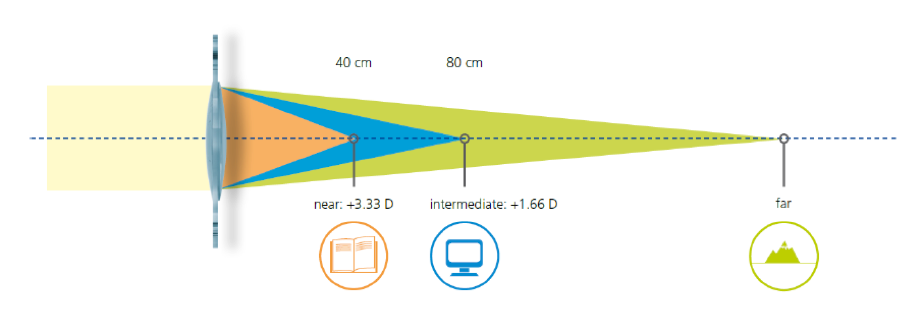
Multifocal lenses split light into 3 different focal points

Glare and haloes induced at night time by multifocal lenses
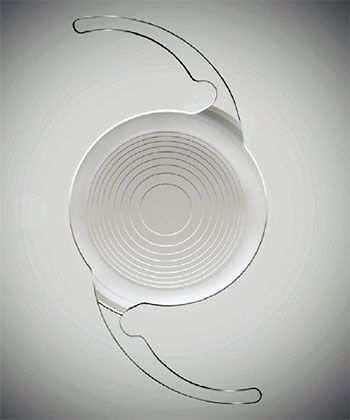
Example of a Multifocal lens with diffractive rings
Own Your Vision in 3 Easy Steps

1. Reach Out
It's super easy. Drop us a line by phone, email, or via the contact form and let's set up a time to get together.
2. Let's Meet
Let's get together so we can learn more about each other. Once we learn about your personality, lifestyle and hobbies we will come up with an individual treatment plan tailored to you and your needs.

3. Enjoy Crystal Clear Vision!
Before you know it you'll be enjoying a life free from the hassle of glasses or contact lenses!


